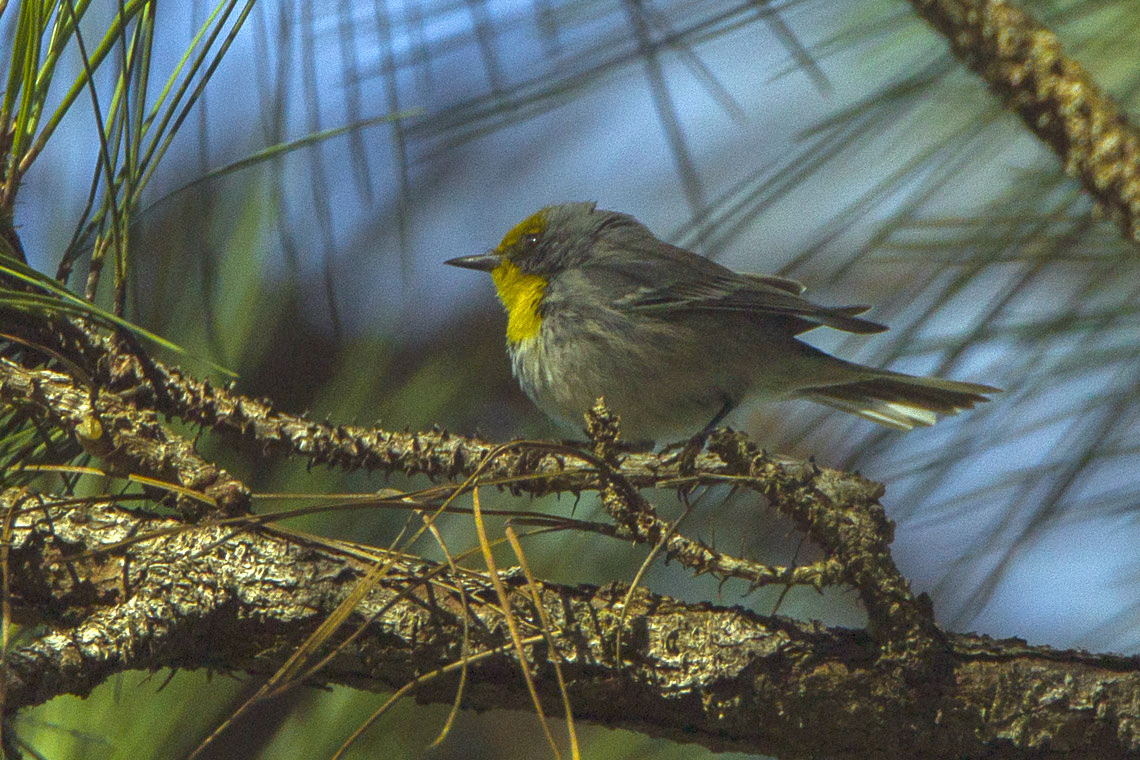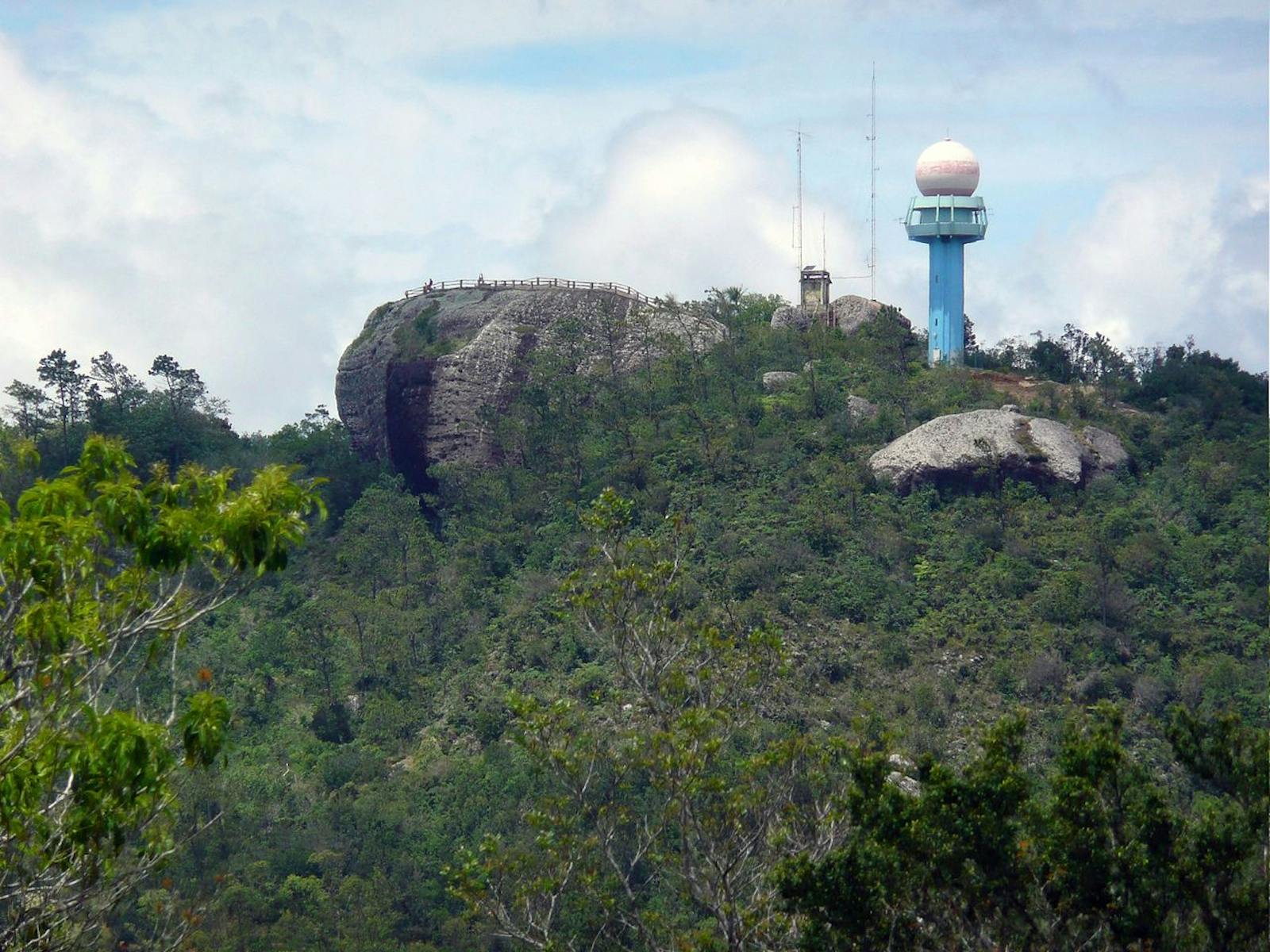Cuban Pine Forests
The ecoregion’s land area is provided in units of 1,000 hectares. The protection goal is the Global Safety Net (GSN1) area for the given ecoregion. The protection level indicates the percentage of the GSN goal that is currently protected on a scale of 0-10.
Bioregion: Caribbean Islands (NT26)
Realm: Central America
Ecoregion Size (1000 ha):
644
Ecoregion ID:
554
Conservation Target:
62%
Protection Level:
1
States: Cuba
The Cuban Pine Forests ecoregion is confined to Cuba and represents a centre of endemism for Caribbean plant and other species. Yet it also has the only island vegetation type in which the structure is dominated entirely by a single species, the Caribbean pine tree. One of the more mysterious creatures found in these sandy pine forests is the Cuban solenondon, a rather large prehistoric looking rodent found nowhere else in the world. Although they cannot see very well, they have a good sense of smell and acute hearing, which helps them to find insects, worms, and other food while sniffing through the pine leaves of the forest floor.
The Cuban Pine Forests are located on the eastern and western sides of the island in the province of Isla de la Juventud and Pinar del Río. These forests exist due to edaphic factors such as acid soils that have little water-retention capacity and are poor in essential elements. Because of this, the forests develop on quartziferous sands, pseudo-spodosols and, lateritic soils.
.jpg)
The flagship species of the Cuban Pine Forests ecoregion is the Cuban tody. Image credit: Creative Commons
The pine grove in the northern province of Pinar del Río is predominately Caribbean pine that develops over ferritic soils of oligotrophic quartzitic yellow soils. On the southern side of the Cajálbana Plateau a dry pine grove develops on rocky substrates and includes the endemic succulent Agave cajalbanenesis. In the Sierra Maestra of eastern Cuba, Cuban Pine predominates, developing on landslide areas over granitic rock.
Pinar del Río represent one of the three most distinctive centers of plant diversity and endemism in Cuba. The Cajálbana Plateau and Preluda Mountains contain nearly 330 species of angiosperms, 3 species of gymnosperms, about 20 species of ferns and close relatives. Of the 75 genera present, 4 are strictly endemic.
Insects, arthropods, land snails, amphibians, and reptiles have highly variable forms here, some marked only by local or regional distribution. Endemic birds include olive-capped warbler, the critically endangered Cuban kite, ivory-billed woodpecker, Cuban trogon, rose-throated parrot, and Cuban tody. Mammals to note are the critically endangered solenodonte, whose current distribution is confined to the island’s northeastern region and, the hutia, living adjacent to the pine forests.

Olive capped warbler. Image credit: Francesco Veronesi, Creative Commons
Of the original pine forests only about 40% remains after centuries of logging pressure, with only three or more blocks of intact habitat larger than 250 km2 left. Habitat fragmentation is relatively low and conversion from original to disturbed habitat is about 0.5% each year, and more than 100 km2 of intact habitat have some protection.
This ecoregion is protected within Mil Cumbres Integrated Management Area, Sierra del Rosario Biosphere Reserve, Loma de la Mensura National Park in the Sierra del Cristal, Pico Cristal National Park, Cuchillas del Toa Biosphere Reserve, and in the Integrated Management Area of the Great Sierra Maestra National Park.
The most serious threat comes from man-made fires which significantly change the vegetation structure and are often left to burn out of control. Planting certain latifoliate plants to act as a barrier and creating firebreaks in the forest could minimize fires. Mining, citrus fruit plantations, grazing, and forestry operations also seriously threaten this ecoregion through the removal and degradation of forested habitats. Species such as endangered parrots and vegetative structure are also threatened due to exploitation of various plants and due to tourism.
In order to preserve the unique biodiversity in this ecoregion, the priority conservation actions are to: 1) improve fire management and prevention; 2) ensure sustainable land management; and 3) strengthen protection of remaining intact habitats against unsustainable exploitation of natural resources.
Citations
1. D’Ambrosio, Ugo. 2018. Caribbean Islands: Cuba.https://www.worldwildlife.org/ecoregions/nt0304. 20 April 2018.
2. Dinerstein, E., D. M. Olson, D. L. Graham, A. L. Webster, S. A. Primm, M. P. Bookbinder, and G. Ledec. 1995. A conservation assessment of the terrestrial ecoregions of Latin America and the Caribbean. DC.: WWF and The World Bank.
3. Davis, S.D., V.H. Heywood, O. Herrera-MacBryde, J. Villa-Lobos and A.C. Hamilton. 1997. Centres of Plant Diversity: A Guide and Straregy for their Conservation: Volume 3, The Americas. IUCN Publications Unit, Cambridge, U.K.



